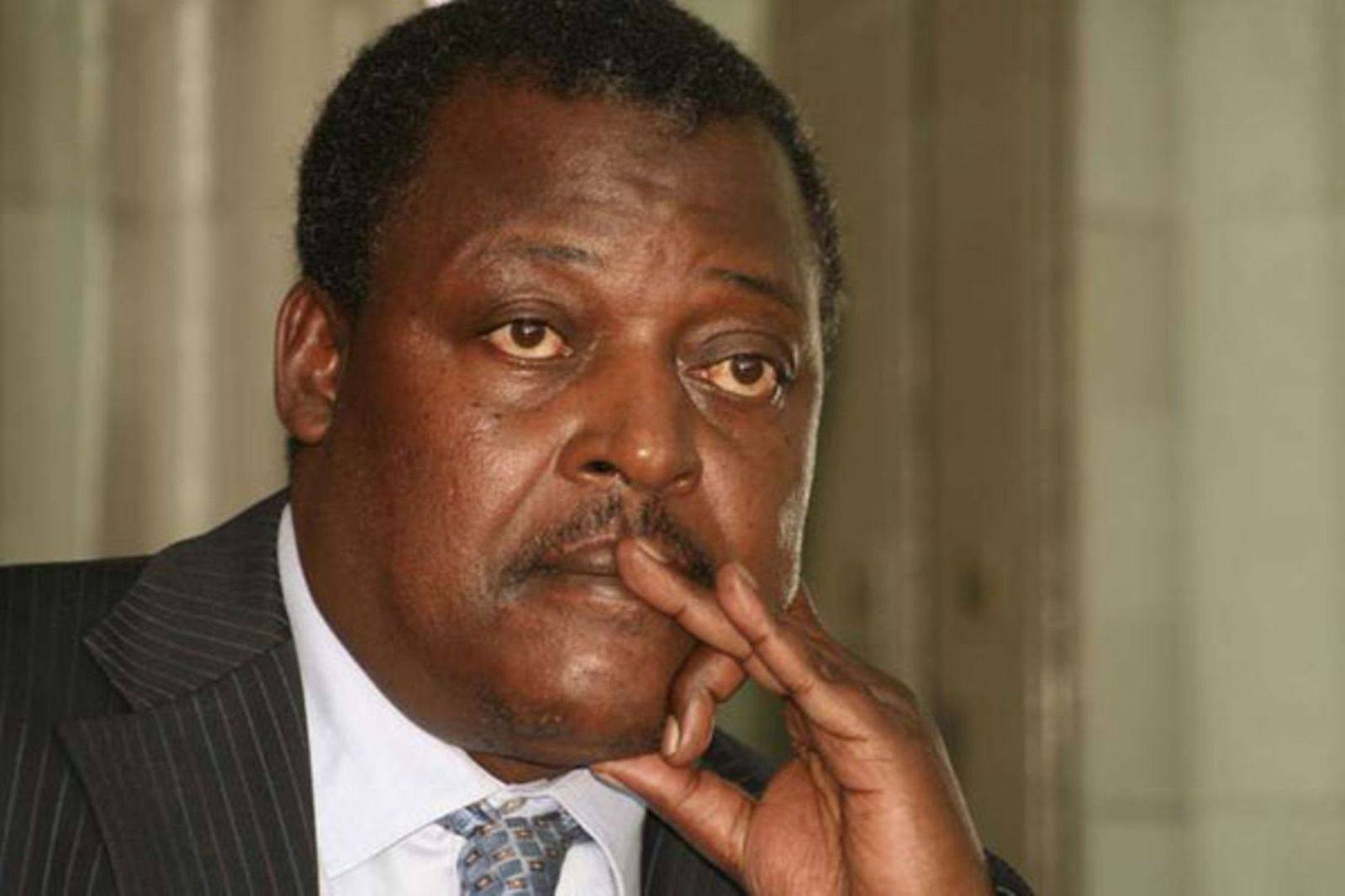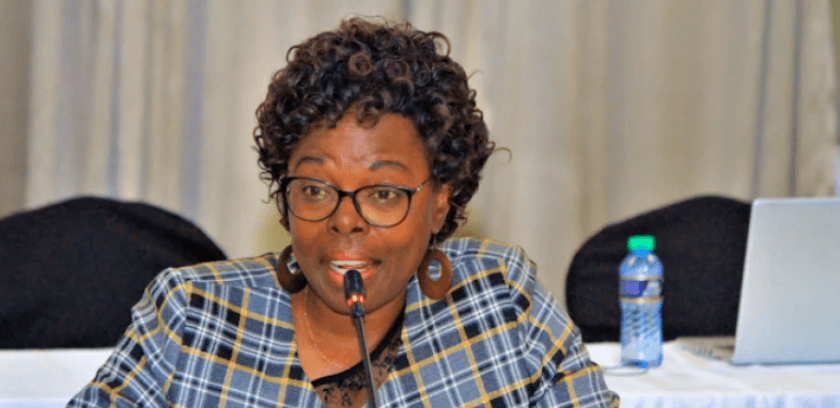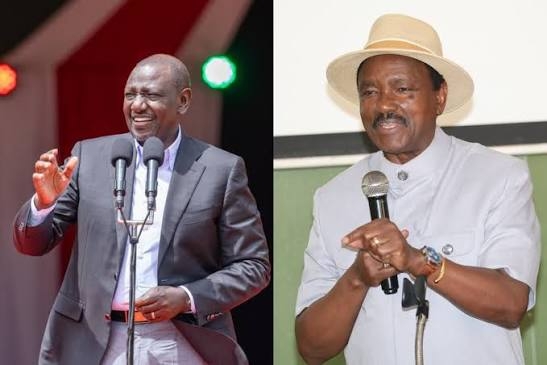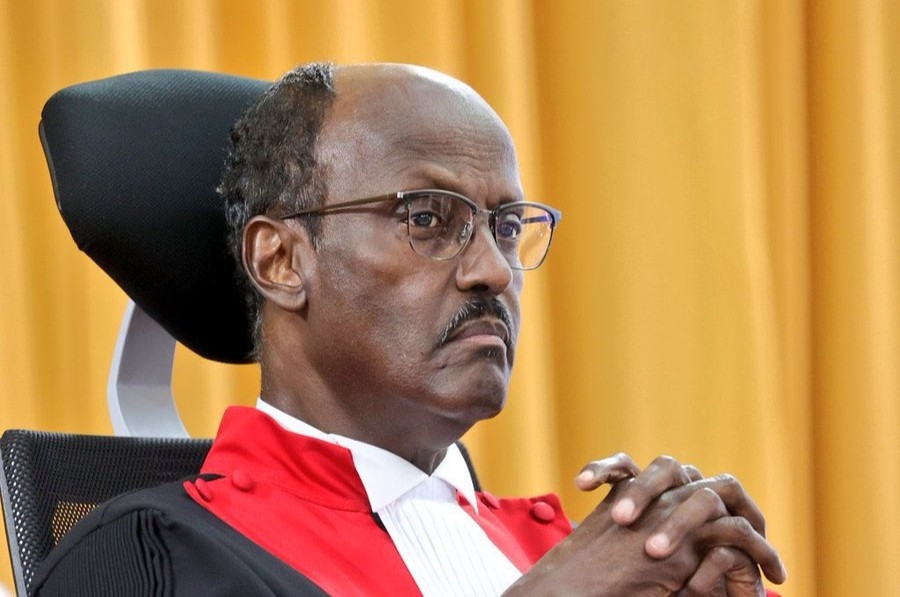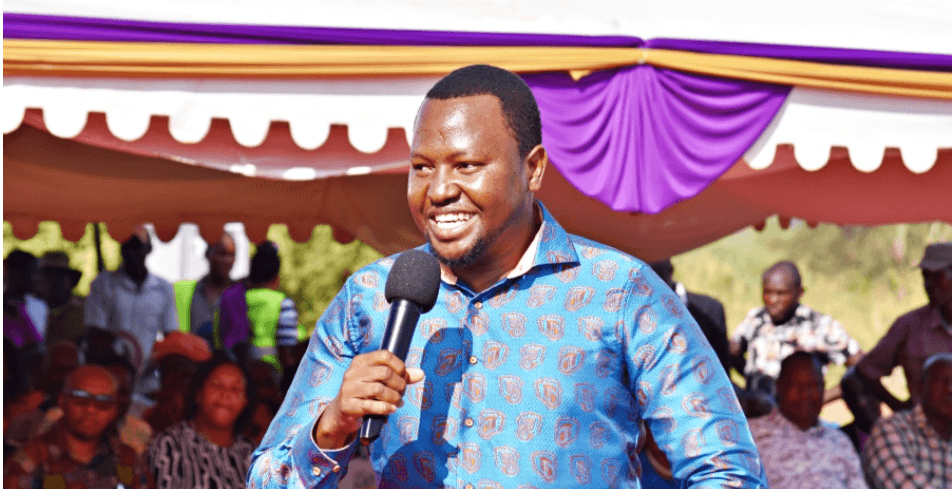
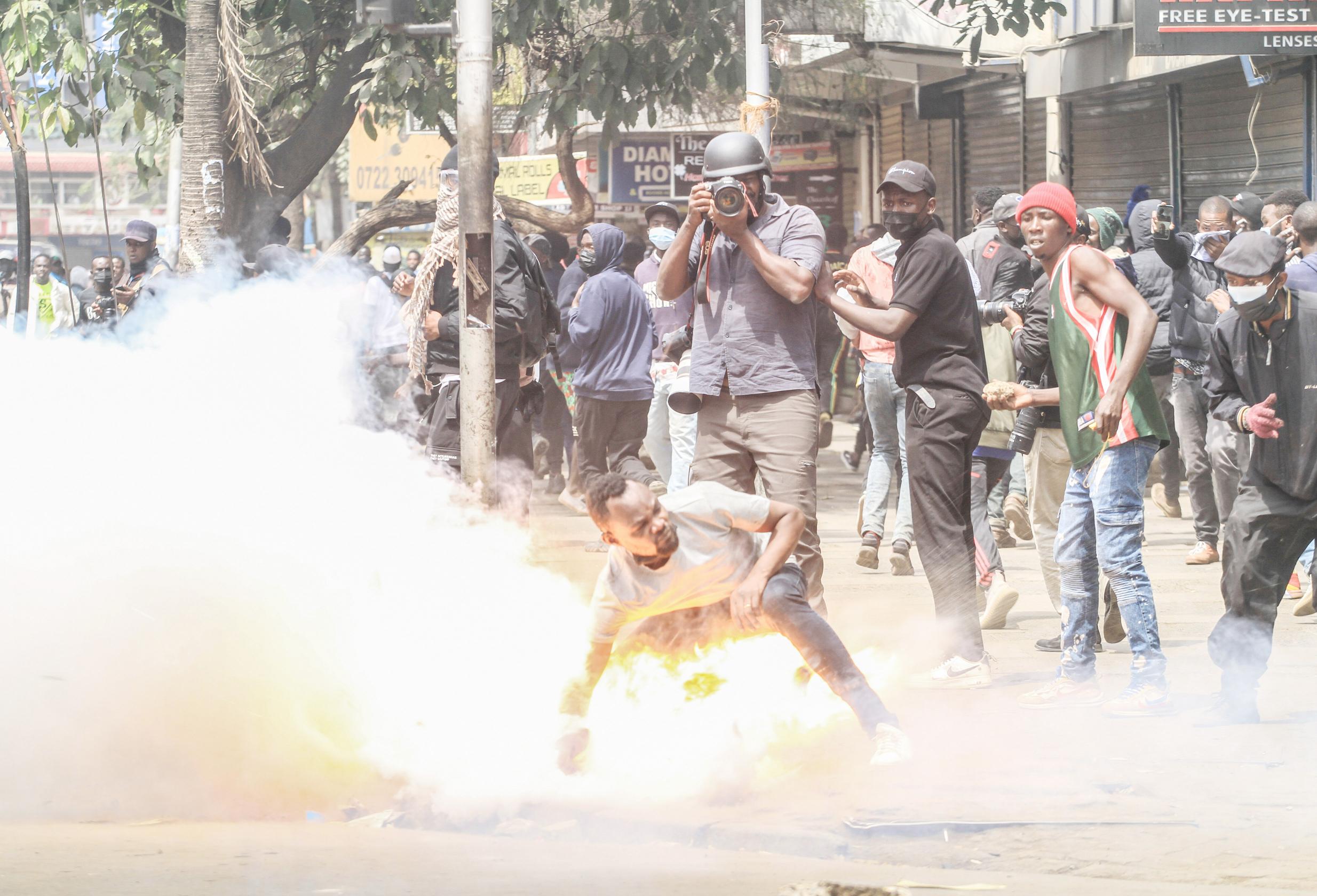
A Tifa poll at the time found 81 per cent of Kenyans supporting the youths. However, most people retreat to the safety of their homes whenever a rallying cry is issued.
For photojournalists, duty calls. The Star’s Douglas Okiddy, Leah Mukangai and Enos Teche rush to the epicentre in Nairobi, getting there via boda boda as matatus keep off the roads.
They find a ghost town blockaded by police. But Gen Zs are undaunted. After mobilising on X (Twitter), they march to the city centre, waving placards and the Kenyan flag.
They sing and dance and play football on the streets, TikToking and Insta Storying their journey.
When they get to town, a rude welcome greets them. Tear gas is lobbed and water cannons blasted.
They barely disperse before regrouping and recharging, hurling stones and burning tyres. “Ruto must go!” they chant.
Okiddy, Mukangai and Teche duck and dash while taking snaps, “with no appropriate gear apart from a press card for identification and a handkerchief to protect you from tear gas”, Teche says.
Cops harass journalists, viewing their photos and footage as potentially incriminating. Protesters can also be hostile, fearing for their safety if featured in the media.
Thugs armed with knives and pangas infiltrate the protests, looting, burning and mugging. And motorcycle gangs, allegedly hired by politicians, ride around the city, brandishing whips and clubs to scare off protesters.
The air is thick with tension. Okiddy psyches himself up by taking it as a normal working day. Mukangai is jittery as it’s a baptism of fire for her. Teche, meanwhile, is resilient, having suffered loss and harm in the past.
“God is the only one who can protect you during these maandamanos,” Okiddy says.
Mukangai wishes they could work freely without being targeted. “It would make it easier for us to deliver and give our best in the field.”
Teche says there is no manual on how to navigate the riots. “You have to read the street like a language,” he says. “You learn to identify plainclothes police by their stance, the way they talk into their shoulders. You spot goons by the adrenaline in their eyes. And you know when to exit.”
The trio witness a full day of running battles as democracy dances with anarchy, leaving the city looking like a war zone.
Coughing and tearing in lingering fumes, they file their hard-earned photos. Each picture is worth a thousand words. They are published online and the most iconic is splashed on the front page the next day. A record of blood, sweat and tears frozen in time.
“No photojournalist takes pride in covering protests showing his country burn,” Teche says poignantly. “We all live and work in this country.”
STAYING NEUTRAL
Douglas Okiddy finds maandamano more intense than rallies, which challenged him the most before.
“Last year’s protest was huge,” he says of the climax on June 25, when Gen Zs stormed Parliament. “People are reading the law and becoming more enlightened.”
His journey to journalism started in high school, inspired by the memories captured in ‘funkies’ (school functions) and the black-and-white pictures in history books.
He learned the ropes with the media team of an organisation he joined after high school, before studying mass communication and video production in college.
He interned with radio and TV stations then joined the Star in 2015, first as an entertainment photographer before transitioning to the general news desk in 2019.
Through his work, he has travelled locally and internationally, met VIPs and attended career- defining seminars.
“My family, relatives and friends think I am rich and famous,” he says with a laugh.
“The passion I have for photography is massive despite the challenges we face in our daily livelihoods.”
When deployed to maandamano, he prays to God for protection and visualises how his shots should look before hitting the streets.
He takes a light breakfast, wears comfortable clothes and shoes, and only carries essential items in his backpack: camera, notebook and water. Thus, he is fleet-footed and able to wash tear gas off his face.
Once on the ground, he greets police with a smile but avoids demonstrators.
“Don’t engage with protesters even if you see your girlfriends,” he warns. “You are supposed to be as neutral as possible.”
When police and protesters clash, he positions himself centrally, where he can see everything and everyone. He shifts depending on where he can get a good shot.
A picture may be just a click away, but he takes it with the public in mind. “You need to be composed, accurate and focused to ensure no words will explain better than the image you take,” he says.
Wary of goons, he looks all round for an escape route. “It’s good to be confident when they happen to be around you,” he says. “Just look them in the eye and say, ‘I’m also at work like you.’”
He captured the point-blank shooting of a face mask hawker during protests on June 17, and it was run in a collage on the front page of the Star the next day.
“Never in my school days did I think I would have four or five photos in the newspaper,” Okiddy says thankfully. “Let alone getting a page-one photo.”
STAGE FRIGHT
At just 4’11” and 48kg, Leah Mukangai is but a baby girl in a big boys’ world.
She found the invasion of Parliament last year scary. “It was a matter of life and death,” she says.
Mukangai studied mass communication in university and majored in broadcast. “Contrary to what I’m doing today, I loved being in front of the camera,” she says with a sunny smile.
As an introvert, she shied away from people, but she practised photography with friends at a few events after her mum bought her her first camera, gradually gaining courage.
Her career began with digital marketing for a real estate company, posting photo and video content on social media to woo clients. She then moved to the Star in 2023.
Before the protests, her toughest assignment was to cover a fire at Hillside Endarasha Primary School, which killed 21 children in September last year.
“I was ambushed to travel to Nyeri. What I encountered left me in distress,” Mukangai narrates sorrowfully.
“Seeing parents and guardians helpless and in tears was the saddest thing. At some point, I was torn between continuing my work and consoling the parents.”
Mukangai believes a picture is a powerful visual. “It gives emotions and details of what the photographer is trying to convey to the audience,” she says.
She was on leave during last year’s protests, but this time she was available, and she decided to get a taste of the action.
Colleagues from other media houses were worried about her, with some questioning why a small girl like her was allowed to come to such a volatile situation.
“That didn’t deter me,” she says. “Instead, it challenged me that in a such a male-dominated setting, I could still thrive.”
It was quite intimidating, however, especially when protesters and goons took over the streets.
“At first, I had so much anxiety, I could not click any pictures,” she recalls.
She had trouble manoeuvring around the chaos while still taking photos. While photojournalists crave exclusives, the environment called for safety to be prioritised.
“We had to stick together as a team to avoid being attacked at any point,” Mukangai says.
Fellow photographers would even call to check if she was okay, and that eased her nerves.
She did not expect her pictures to be published in the paper. When some made the cut, she felt so proud.
“It’s like a pat on the back,” she says. “This has really motivated me to always try and be part of the few journalists covering the protests.”
BEATEN BY POLICE
Enos Teche is used to seeing opposition leaders, activists and unionists lead protests. Not leaderless, party-less and ethnically diverse youths.
He watched last year as they fundraised online, printed ‘Reject the Finance Bill’ T-shirts and held signs written ‘Zakayo, shuka (tax collector, come down)’.
“Clearly, Gen Zs had decided to break their silence after long being inactive in politics,” Teche says.
Ruto’s allies derided the movement as a bunch of cool kids out for adventure, only to end up fleeing Parliament through an underground tunnel when the youths raided the premises.
Though they fell short of making Ruto ‘Anguka nayo (go with the Finance Bill)’, they shook him into withdrawing the legislation.
This year was nothing similar to that, Teche says. Pillaging overshadowed protests.
Teche has been in photojournalism for 13 years. When not covering general news, sports or business, he’s suiting up for parliamentary press or scouting for off-beat photos.
“A photographer is as good as his last assignment,” he says.
He studied mass communication and journalism. He wanted to do broadcast but loved print, so he freelanced for Nation, Standard, Star and Sunday Express. Many pitches went unpublished, but he took encouragement from the few that were.
He joined the Star as an intern in 2014, and has since become a star in his own right. “I have won multiple photojournalism awards,” he says.
Unfazed by prior undertakings, maandamano presents a dilemma to him. In trainings, he is advised to position himself with the cops, but he has learned the hard way not to trust them.
So he drifts to the protesters even though it cost him last year, when he lost a lens and a camera to a water cannon.
“I have been beaten by police while covering political protests before,” he says, citing an assault after opposition leader Raila Odinga swore himself in in 2017.
“That one took me long to forget, especially when the same officers who beat me asked me to report them to Central police station.”
Teche loves it when his photos are used prominently and go viral. But he is equally happy just to give a voice to the voiceless.
“I once photographed a woman outside Jogoo House, protesting over Mugo Wairimu, a fake doctor in Githurai who was drugging and raping his patients,” he says. The quack was later convicted.
“An activist inboxed me on Facebook, saying, ‘Thank you for showing that.’ Such feedback really motivates me.”
COPING WITH TRAUMAAfter a gruelling day covering protests, Okiddy showers thoroughly and replenishes his energy with a proper meal.
“I try as much as possible to be in a safe environment and get some peace of mind,” he says.
Mukangai unwinds by reaching out to close friends and sharing her ordeal. This gives her relief and helps her calm down.
“My parents were against it when I first told them I would like to cover the protests,” she says.
“But later on, they came to terms with it, and now they support me fully.”
Teche says photographers and videographers are haunted by the moving images they work so tirelessly to bring to audiences.
He advocates therapy and medication, noting they can be costly but “we are humans first before being journalists”.
Private sector players say maandamano costs the economy Sh3 billion a day in foregone sales and looting.
Desperate to avoid more rampage, President Ruto has resorted to terror charges against protesters.
He’s also ordered police, whom rights groups say have killed 115 people in a year, to just aim lower next time: “Shoot them in the legs.”
Okiddy, Mukangai and Teche are on standby. It may not be pretty, but the story must be told.
Tom Jalio is the features editor of the Star and the producer of the Jalio Tales YouTube channel



